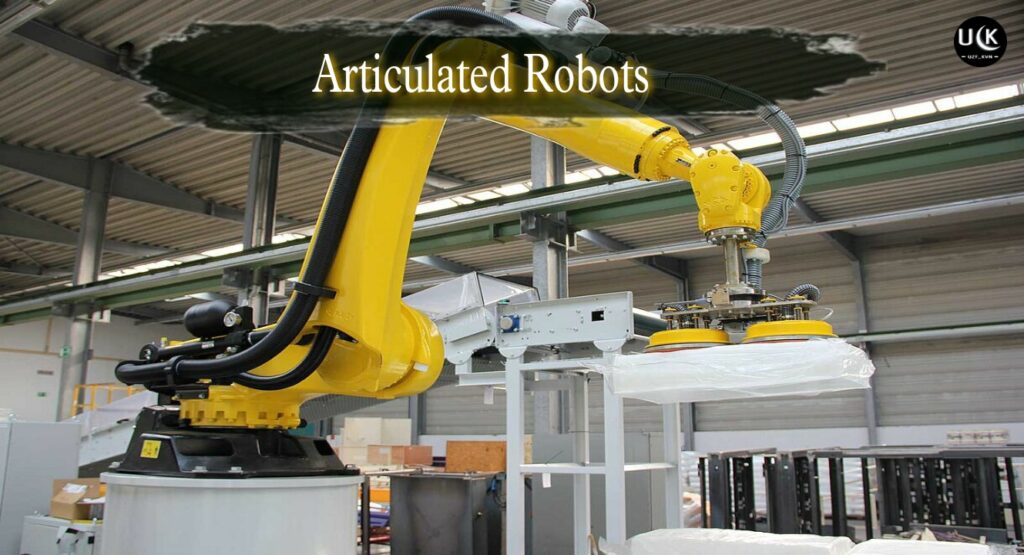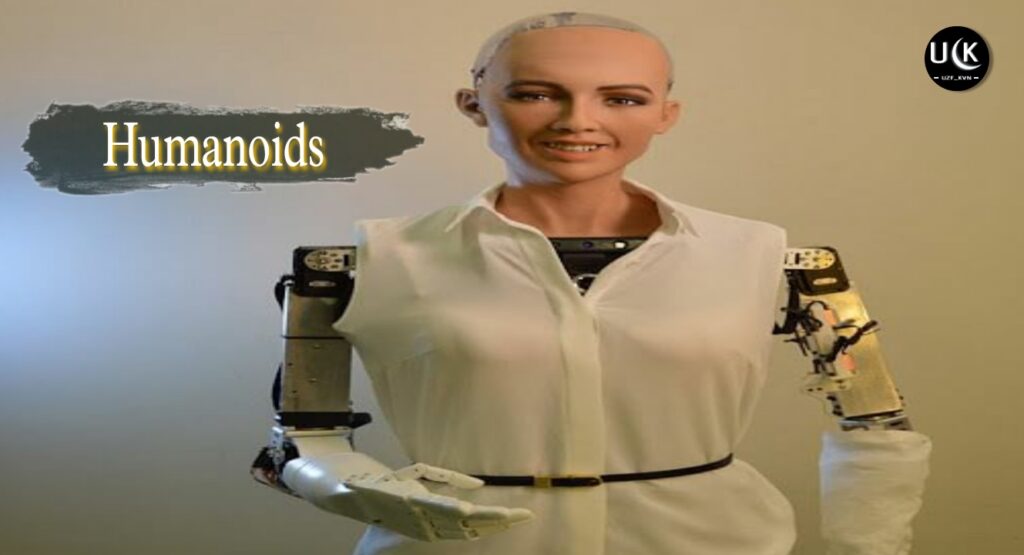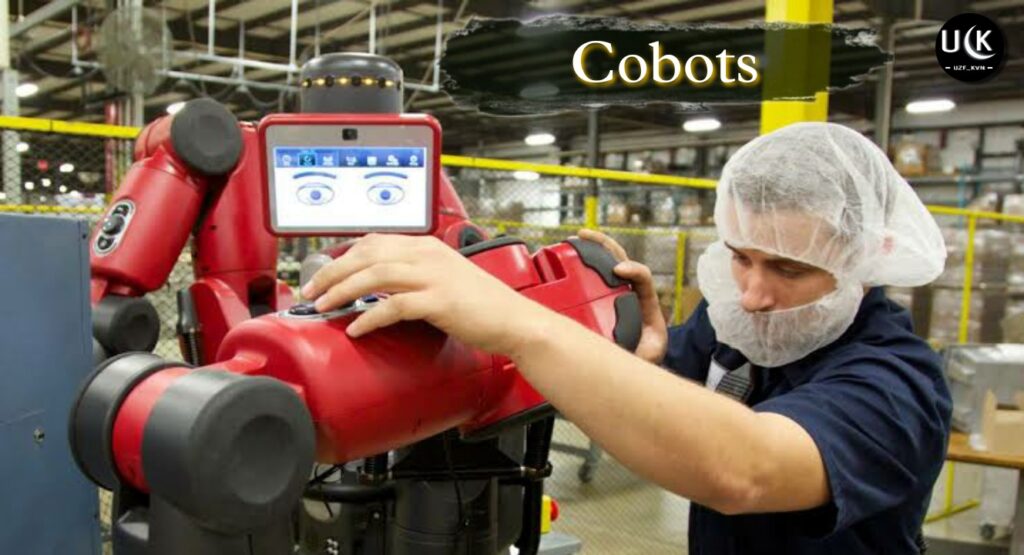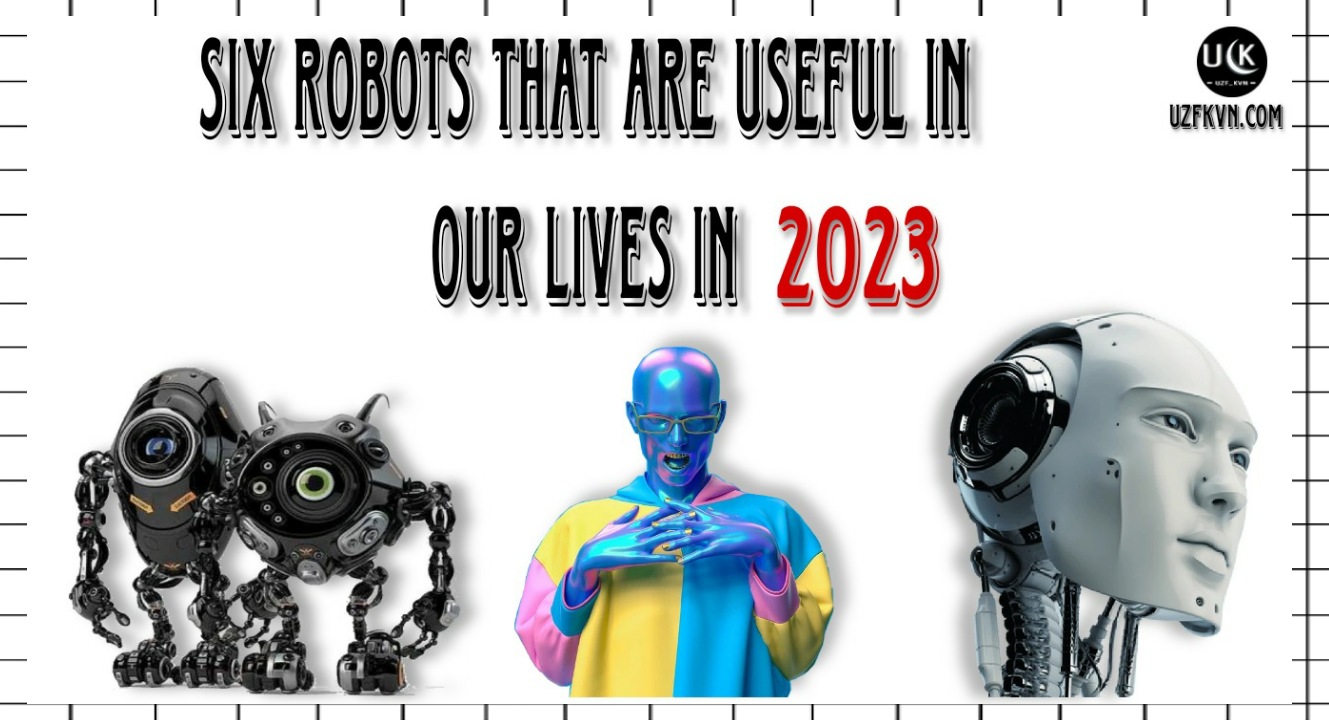Hello friends, I am Uzaif Kevin the author of your own website uzfkvn.com. I hope you all are absolutely fine. I’m fine too. So without wasting time, in this blog I will tell you “Six robots that are useful in our lives in 2023”
Soo Lets Begin,
A robot is a machine designed to carry out tasks automatically, often with some level of autonomy or intelligence.
Robots can be programmed to perform a wide variety of functions, from simple repetitive tasks to complex operations that require sophisticated decision-making abilities.
They can be controlled by human operators, operate autonomously, or some combination of the two.
Robots come in many different shapes and sizes, from small robotic toys to large industrial robots used in manufacturing plants.
Some robots are designed to look and act like humans or animals, while others are purely functional in their design.
Robotics technology is used in a wide range of fields, including manufacturing, healthcare, agriculture, military, and space exploration, among others.
Table of Contents
There are Six main types of Robots

Edit By: Uzaif Kevin
1. Autonomous Mobile Robots:
Autonomous mobile robots (AMRs) are robots that can move and navigate through an environment without human intervention.
They are designed to perform various tasks, such as picking and transporting items, inventory management, and facility security.
AMRs use a combination of sensors, software, and machine learning algorithms to perceive and interpret their surroundings and make decisions about where to move and what actions to take.
They can navigate through complex environments and avoid obstacles, and some models are even capable of performing tasks that require manipulation, such as grasping and placing objects.
AMRs are used in a variety of industries, including logistics, manufacturing, healthcare, and retail, among others. They are becoming increasingly popular due to their ability to improve efficiency and reduce labor costs.
Twenty ways to earn money online in 2023? And how to earn money with Google?- https://uzfkvn.com/knowledge/twenty-ways-to-earn-money-online-in-2023-and-how-to-earn-money-with-google/

Edit By: Uzaif Kevin
2. Automated Guided vehicles:
Automated Guided Vehicles (AGVs) are material handling systems that use self-guided vehicles to move materials, products or components around a manufacturing or distribution facility.
These vehicles are equipped with onboard navigation systems such as lasers, magnets, or sensors that allow them to follow pre-programmed paths and avoid obstacles in their path.
AGVs are commonly used in manufacturing plants, warehouses, and distribution centers for transportation of materials and goods between different locations, such as between storage racks, production lines, and shipping docks.
They are used to transport a wide range of loads, including pallets, carts, racks, and even individual products.
The use of AGVs in material handling provides numerous benefits, such as increased efficiency, reduced labor costs, improved safety, and better control and traceability of materials.
AGVs can also operate continuously, 24 hours a day, which can improve throughput and reduce cycle times.

Edit By: Uzaif Kevin
3. Articulated Robots:
Articulated robots are industrial robots that have a series of joints, typically three to six, that allow them to move and position themselves in a variety of ways.
The joints are connected by a series of links, which can be rotary or linear, and are usually controlled by servo motors.
These robots are called “articulated” because their joints are designed to move like human limbs, with the ability to bend, rotate, and twist in a wide range of directions.
This flexibility allows them to reach into tight spaces, around corners, and in other hard-to-reach areas.
Articulated robots are used in a wide range of applications, such as assembly, welding, painting, and material handling.
They are also commonly used in industries such as automotive, aerospace, and electronics manufacturing, where precision and efficiency are critical.
Articulated robots are often equipped with sensors, cameras, and other advanced technologies that enable them to perform complex tasks with high precision and accuracy.
They can also be programmed to work autonomously or in collaboration with human operators, which can improve productivity and safety in the workplace.

Edit By: Uzaif Kevin
4. Humanoids:
Humanoids are robots designed to look and move like humans. They are typically equipped with two arms and legs, a torso, a head, and a variety of sensors and actuators that allow them to move, sense their environment, and interact with objects and people.
Humanoid robots are often used in research and development to study human cognition, behavior, and social interaction.
The design of humanoid robots is often inspired by the human body, with features such as jointed limbs, articulated fingers, and a head with cameras and sensors that enable them to perceive their environment.
Many humanoid robots are also designed to walk, run, and balance like humans, which requires advanced control algorithms and sensor systems.
Humanoid robots have a wide range of potential applications, from entertainment and education to healthcare and service industries.
For example, they could be used as companions for elderly or disabled individuals, assistants for medical professionals, or as customer service representatives in retail and hospitality settings.
While humanoid robots have many promising applications, they also pose significant technical and ethical challenges, such as ensuring their safety and reliability, addressing concerns about privacy and autonomy, and determining their place in society.
As a result, the development of humanoid robots is an active area of research and debate among scientists, engineers, and policymakers.

Edit By: Uzaif Kevin
5. Cobots:
Cobots, short for “collaborative robots,” are robots designed to work alongside humans in a shared workspace.
Unlike traditional industrial robots, which are typically kept behind safety barriers to protect human workers from potential hazards, cobots are designed to work in close proximity to humans without posing a threat to their safety.
Cobots are equipped with advanced sensors and algorithms that allow them to detect and respond to the presence of humans and other objects in their environment.
They are also designed to be lightweight and easy to program, which makes them flexible and adaptable to a wide range of tasks and applications.
Cobots are commonly used in industries such as manufacturing, logistics, and healthcare to perform a variety of tasks, such as assembly, pick-and-place, inspection, and packaging.
They can also be used to assist with repetitive or physically demanding tasks, which can reduce the risk of workplace injuries and improve the overall efficiency of the operation.
One of the key advantages of cobots is their ability to work in collaboration with human workers, which can improve productivity and job satisfaction.
Cobots can be programmed to take on tasks that are dangerous, dirty, or dull, while human workers can focus on tasks that require higher levels of cognitive and creative skills.
As cobots become more widely used in industry, there is increasing interest in developing standards and guidelines to ensure their safety and effectiveness in a collaborative environment.
This includes considerations such as ergonomic design, user interface design, and risk assessment.

Edit By: Uzaif Kevin
6. Hybrids Robots:
Hybrid robots are robots that combine elements of multiple robot types, such as wheeled robots, legged robots, and flying robots, to perform a wider range of tasks and operate in different environments.
By integrating the strengths of different types of robots, hybrid robots can improve their versatility, mobility, and overall performance.
For example, a hybrid robot might have wheels for fast and efficient movement on flat surfaces, legs for navigating uneven terrain or climbing stairs, and a flying module for aerial inspection or surveillance.
By combining these different modes of locomotion, hybrid robots can operate in a wide range of environments, from warehouses and factories to disaster zones and other challenging environments.
Hybrid robots can also incorporate a variety of other features and capabilities, such as manipulators, sensors, and communication systems, to perform tasks such as inspection, maintenance, and search and rescue operations.
They can be controlled remotely or operate autonomously, using advanced algorithms and machine learning techniques to adapt to changing conditions and optimize their performance.
The development of hybrid robots is an active area of research and development in the field of robotics.
While the technology is still in its early stages, hybrid robots have the potential to transform a wide range of industries and applications, from logistics and transportation to healthcare and emergency response.

Edit By: Uzaif Kevin
Who is the most iconic-robot?
R2-D2 is a fictional robot character in the Star Wars franchise. The character was created by George Lucas and first appeared in the 1977 film Star Wars Episode IV: A New Hope.
R2-D2 is a small astromech droid, designed to perform a variety of tasks including spacecraft repair, data analysis, and navigation.
R2-D2 is characterized by his cylindrical body, dome-shaped head, and retractable arms. He communicates through a series of electronic beeps and whistles, which are interpreted by other characters in the film.
R2-D2 is often portrayed as a loyal and resourceful companion to the human characters in the Star Wars series, particularly the protagonist Luke Skywalker.
Throughout the Star Wars films, R2-D2 plays a key role in many of the story’s pivotal moments.
He is responsible for carrying the plans to the Death Star, which are essential to the Rebel Alliance’s plan to destroy the battle station.
He also helps rescue Luke Skywalker from the ice planet Hoth, and serves as a co-pilot for various spacecraft, including the Millennium Falcon.
R2-D2 has become one of the most iconic and beloved characters in the Star Wars franchise, and has been featured in a wide range of merchandise, from action figures and plush toys to video games and comic books.
The character has also been the subject of numerous fan theories and speculation, adding to his enduring popularity among Star Wars fans.

Edit By: Uzaif Kevin
FAQ about Robots:
1. What is the work of Robots in Space?
Robots have played a critical role in space exploration and research, performing a wide range of tasks such as planetary exploration, satellite maintenance, and space station assembly and maintenance. The harsh and hazardous conditions of space make it an ideal environment for robots, which can operate more safely and efficiently than humans in many cases.
2. What are robots made for?
Robots are made for a wide variety of purposes, depending on their design and intended application. For example: Industrial automation, Logistics and transportation, Healthcare, Agriculture, Military and security, Space exploration, Education and research, Household tasks.
3. What threatens us from robots in the future?
The main concerns and potential threats related to robots in future are:
Job displacement, Safety concerns, Security threats, Ethical concerns, Unintended consequences.

Edit By: Uzaif Kevin
Conclusions of Robots:
From my point of view, as much as robots are beneficial for us, more than that they are also a big problem for us humans.
We are making our work easier with Robots, due to which our work is being done very accurately and at once.
With the help of Robots, our time and money is being saved, but its disadvantage is that we humans are becoming unemployed.
Artificial intelligence system is being installed in robots, due to which robots are becoming more advanced and we humans are becoming more stupid.
You people must be thinking that how- Then listen, till now whatever machine man has made like washing machine and mixer, after that man has stopped using his hand for this work, this work is done by hand. Will be lazy to do it now.
Similarly, the more machines we make to make work easier, the more inefficient we will become.
My suggestion is that it would be better to make robots considering the loss of human life by making robots.
Thanks For Reading A Complete Blog
How AI technology is growing in 2023?
More Article:
- LG Velvet Review: एलजी का 48MP कैमरा साथ 4300mAh बैटरी फोन मात्र ₹36,990 मे!
- Huawei Y9s Review: हुआवेई का 48MP कैमरा साथ 4000mAh बैटरी फोन मात्र ₹19,490 मे!
- Oppo Reno10 Pro 5G Review: ओप्पो का 50MP कैमरा साथ 4600mAh बैटरी फोन मात्र ₹34,199 मे!
- Oppo A79 5G Review: ओप्पो का 50MP कैमरा साथ 5000mAh बैटरी फोन मात्र ₹12,999 मे!
- Oppo Reno11 5G Review: ओप्पो का 64MP कैमरा साथ 4500mAh बैटरी फोन मात्र ₹29,999 मे!



Thank for the information
Its means alot Saquib.